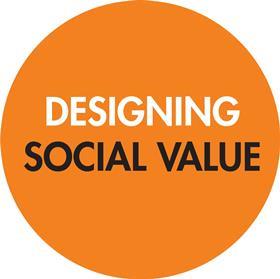Building Design’s social value columnist looks at the emerging metrics

There is a race on to develop social value metrics with traction right across the built environment, measures that can readily be understood and used for procurement within the public sector and be fed into a variety of digital models.
We live in a culture of audit, meaning that the financial bottom line takes precedence because it is easy to measure.

The transformation of the construction sector into a data-driven environment has taken a while to get started, but is now happening at a shocking speed. Practices that are not taking control of their data at this time will be playing catch-up (if only data management were taught in schools of architecture – something we plan to introduce in our new practice research-based MArch at the University of Reading).
This isn’t just an issue for large practices. Small practices have a great deal to gain from the demonstration of value with metrics and have an inherent social value in being both small and local. The social value of employing small local businesses within public procurement is growing in recognition and new systems are being developed to make this happen (see for example Supply Change).
Colleagues in social value consultancies are reporting a rush of interest from architects interested in finding out how best to demonstrate social value. This can be an expensive and complex business which is why we have been developing the Social Value Toolkit for Architecture to be published next month by the RIBA. Some of the key issues will be unpacked at The Social Value of Housing, a half-day conference due to be live-streamed by the NLA on March 19.
Quantitative measures can be a dangerous game, but bald numbers can be used to draw attention to injustice. Indeed they have to be used now to shift audit culture away from the monetary bottom line to something that might alleviate suffering and avert climate change.
Quantification cannot happen without categorisations or codings that can be used to cluster together data. Categorisations are social constructs and form a powerful part of our built moral environment, something that architects must have a share in. I see time and again that architects are missing out because of the way they are categorised (for example through where we sit in the standard industry classifications). If standardised protocols around language and its usage can be made, as COBie (Construction Operations Building Information Exchange) has done for BIM, it must be possible for social value and indeed sustainability.
More agreement is needed on the basic constituents of sustainability. The UN Sustainable Development Goals (SDGs) are not easily mapped onto the built environment, apart from number 11. ‘Sustainable Cities and Communities’. As part of our work at the UK Collaborative Centre for Housing Evidence (Cache) we did a systematic literature review of design value and concluded that design value equals the sum of environmental value, social value and economic value. This is the commonly used triple bottom line of sustainability. The same categories are used in the government’s Treasury Green Book (the basis of its financial decision-making) and the National Planning Policy Framework.
It seems that another model for sustainable development, the Five Capitals, is being used by the Building Research Establishment (BRE) for the development of their Procuring for Value tool. Procuring for Value, you may remember, was a recent report developed by the Construction Industry Council promoting outcomes-based procurement. This, I suspect, is the direction of travel for the whole industry, along with integrated project insurance (check out IPInitiatives).
The recently published RIBA Sustainable Outcomes Guide is an important initiative led by Gary Clark at HOK which maps out current best practice in evaluation from a built environment perspective and is an important step on the journey. It has been developed in tandem with a revised RIBA Plan of Work that puts feedback loops, post-occupancy evaluation and life cycle cost at the heart of the construction process. Social value is here defined using a combination of Breeam for communities and the Social Value Toolkit for Architecture.
The UK Green Building Council, which consults on a regular basis with industry and academic experts, is leading the way on social value, in particular consistency in its measurement. It is widely agreed that high-level indicators of social value are needed that offer local flexibility. Let’s hope they happen soon.
















No comments yet